Tuesday 22nd August 2023
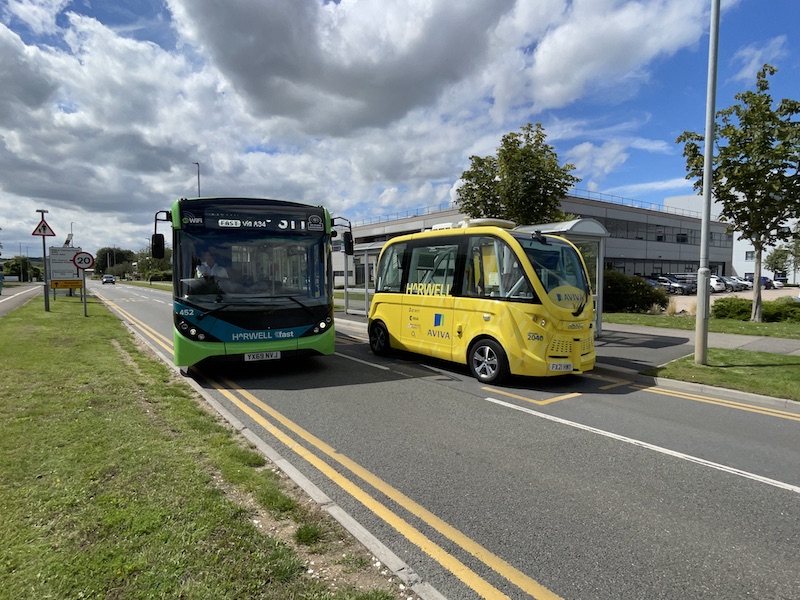
I stopped off on my recent return journey on Thames Travel’s new route X34 between Newbury and Didcot at Harwell Science and Innovation Campus to check out the Darwin Autonomous Shuttle (DAS) trial that’s been running around the site for the past two years.

Harwell is the UK’s leading science and innovation campus on a 700-acre site of the former research centre of the UK Atomic Energy Authority which took the site from RAF Harwell after the Second World War. Over 6,000 people now work on the campus in over 240 public and private sector organisations working across sectors including Space, Clean Energy, Life Science and Quantum Computing.
Unsurprisingly everything is forward looking on Harwell Campus including plans to add 1.5 million square feet of commercial space, new homes, a hotel and amenities by 2027 as the next step in delivering its 5 million square feet campus Masterplan. The trial of an autonomous pod style Shuttle therefore fits very neatly into the ethos of the campus.
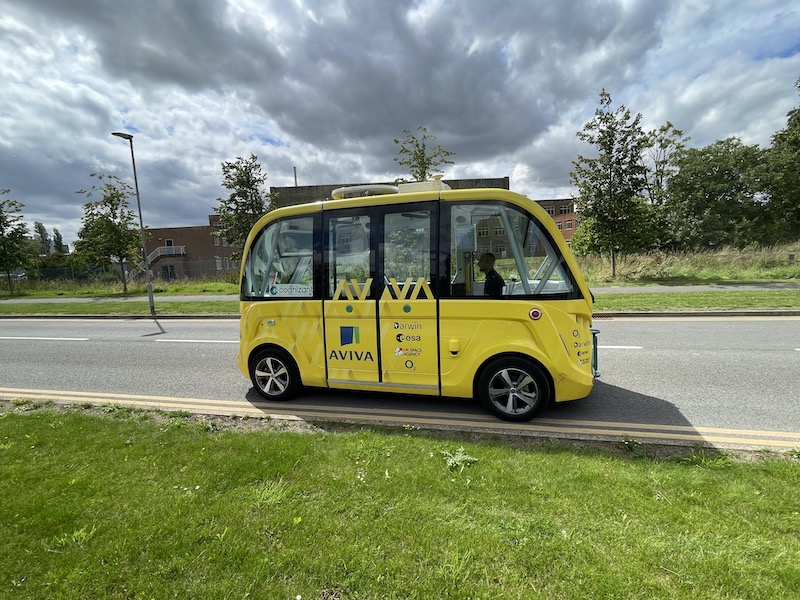
Introduced in November 2021, the trial is being overseen by Darwin Innovation Group using an 11 seater Navya vehicle (with capacity for four standing) as used in a number of applications around the world.

Whereas the autonomous bus trial between Didcot Parkway and Milton Park operated by First Bus and the Forth Road Bridge trial run by Stagecoach have drivers taking control as needed during the journey as well as opening and closing doors, the Navya vehicle really can do everything itself as it wanders around the campus including stopping at bus stops, opening doors, closing doors and setting off again.

There is a”safety operator” on board as required by UK regulations but he’s only called upon to take over on a couple of small sections of the route where the vehicle joins a busier road from a quieter side road and on one small stretch of road where hedging has become overgrown and the vehicle’s radar doesn’t like it – see image below.
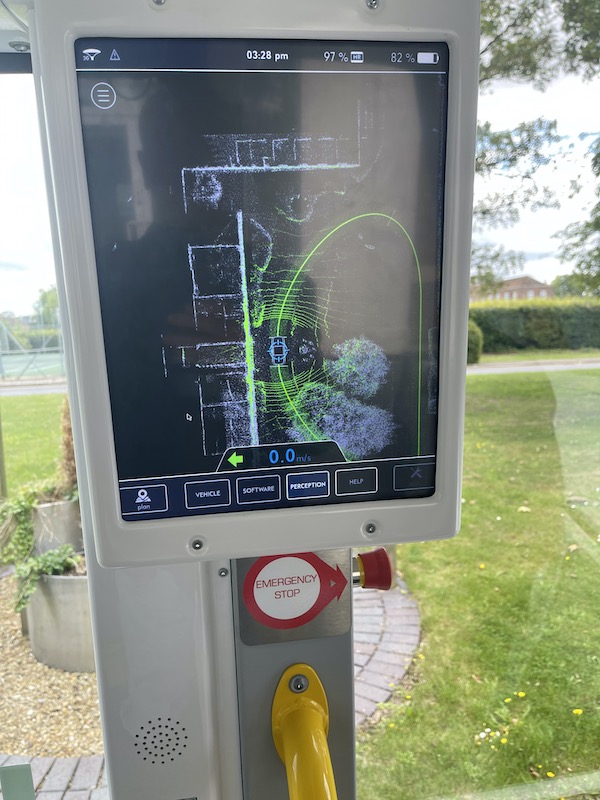
There’s no steering wheel, nor pedals or hand brakes but the vehicle does come with safety controls that can be used to operate in an emergency using a portable console.
Two former PCV drivers have been trained to “drive” the Shuttle and take it in turns around a rota to be with it on every trip.
The vehicle is equipped with LiDAR sensors, cameras, odometry sensors and a GNSS (GPS) antenna to help it position itself and detect obstacles.
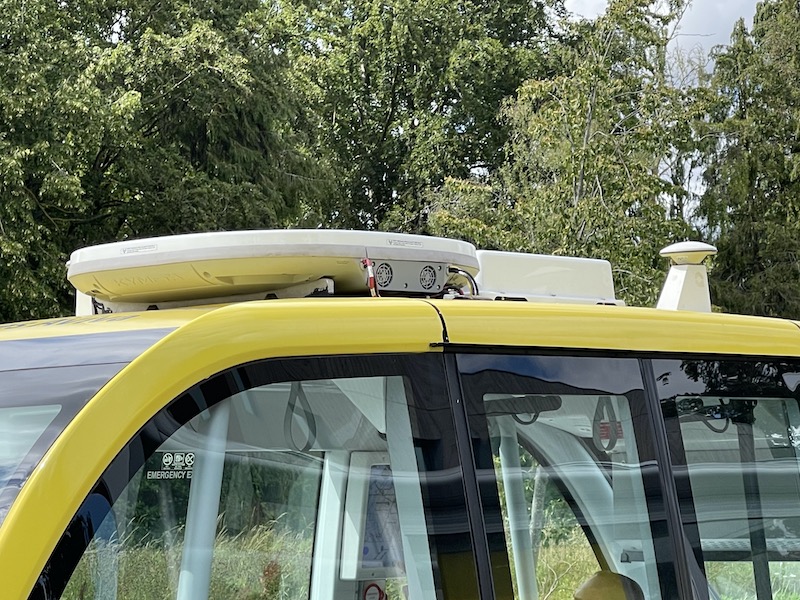
The DAS’s manufacturer has fully mapped out the routes the shuttle is travelling. The shuttle has been programmed with this mapping information, to ensure it knows what to expect and what to look for.
The “safety operator” can see what the sensors are picking up and whether there’s likely to be an obstruction on the planned swept path.

On my afternoon visit the bus wasn’t doing much trade as it wandered up and down its route around the campus and I suspect the novelty among those working at Harwell has now firmly worn off and it has few takers other than a constant stream of official visitors keen to see the lessons being learned and how the technology can be adapted to other applications.
I was told Government ministers often arrive for a briefing and are suitably impressed with what has been, and can be, achieved.
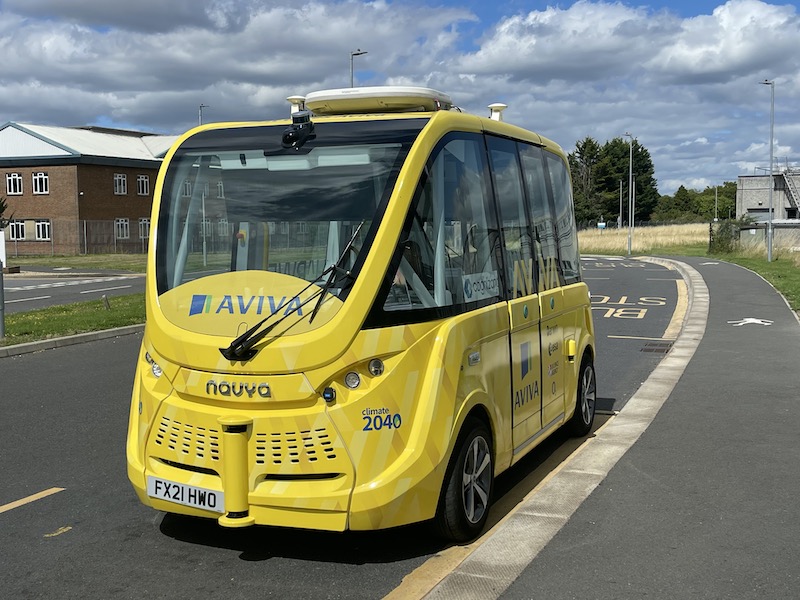
There’s a website which shows the location of the Shuttle on its route around the campus but I doubt it gets many followers these days.
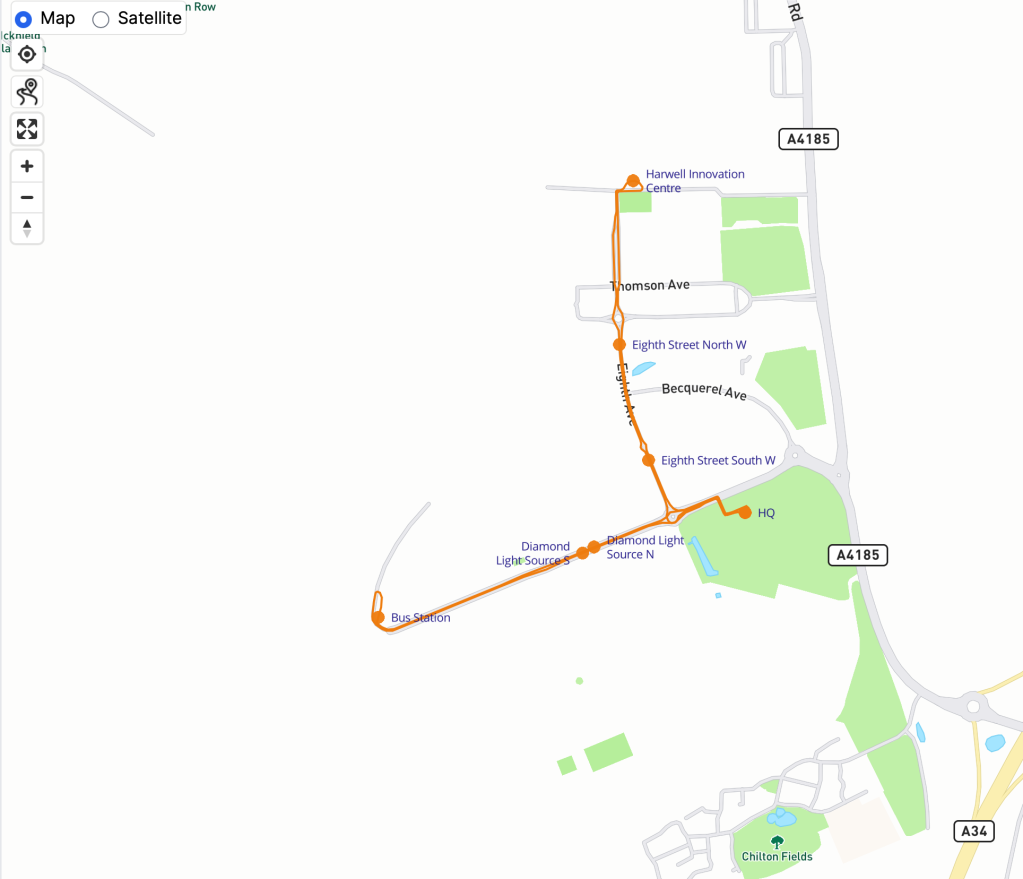
It’s free to ride the Shuttle but passengers need to show a Harwell Science and Innovation Campus pass or a guest pass to the safety operator. I was fortunate to be given access without a guest pass.
Partners in the project along with Darwen and Harwell include Aviva (obviously keen to gain experience of insurance implications), Cognizant (“we give organisations the insights to anticipate what customers want and act instantly to deliver on those demands. So they can achieve the goal of every modern business, staying one step ahead of a fast-changing world”), the European Space Agency (maybe they’re looking for an application on Mars?) and Telefónica (“Telecommunication networks are the most powerful transformative platform on Earth. Never before has a technology reached so many people so quickly. Telecommunication companies are the backbone of our society and can only fulfil their role if they have the best networks, the best technology.”)
Darwin reportedly are planning to broaden the service by introducing a second autonomous vehicle developed by Auve Tech (an Estonian developer of self driving vehicles) so comparisons can be made between the two. The photo below is from its website and looks like that trial has now taken place.

Darwin’s website explains the rationale behind the Harwell trial on its website: “autonomous vehicles have been discussed in theory for a very long time. Before they can become a widespread reality, we need to demonstrate how they work on a small scale.”
The Harwell trial is definitely “small scale” but I’m sure a huge amount is being learnt.
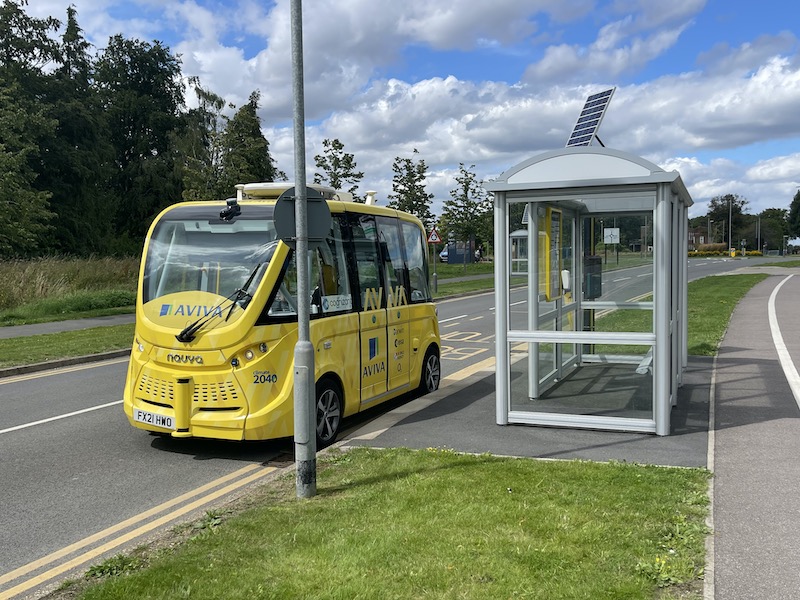
Roger French
Blogging timetable: 06:00 TTHS and Su DRT extras.


‘Safety controls can be sued…’ I hope that’s not a Freudian slip! As ever, thanks, Roger, for another interesting post.
LikeLike
Oops; sued now used! Thanks.
LikeLike
Thanks for keeping us up to date on this exciting (or not) new technology; incidentally is “iunsurance” (re Aviva involvement) new-speak for “insurance, but they might just drop it like a hot brick”?
LikeLiked by 1 person
Oops! u now removed! Thanks.
LikeLike
I can’t help thinking that this is all pointless vapourware.
LikeLike
Lots of trials but no solutions to the problem with them
Developing driverless train is much more sensible. Trains operate in a very controlled environment and the technology is already proven. The DLR is driverless and Paris has driverless trains. The UK is being left behind with this
LikeLike
Driverless tram–which, in effect, is almost what this vehicle is.
(Or more unkindly, a trackless peoplemover or gadgetbahn)
It would be good to compare this to Coventry Ultralight tram once that is properly running (as that also has the potential to be a gadgetbanh)
LikeLike
“Trains operate in a very controlled environment”
I wish.
There’s little controlled about the mainline railway in the context of an automatically controlled train, especially if it barfs on road/lineside foliage.
On the route I drove yesterday it would have to cope with uncontrolled farm crossings, uncontrolled pedestrian crossings, passengers hanging off platforms edges as the train arrived in the platform (smartphone zombies are real, and they do stupid things because they think that the smartphone makes them immune from anything including the laws of physics) and a huge amount of foliage ranging from lineside bushes and trees overhanging (but clear of) the line to branches and bushes which the train hit.
Autonomous vehicles on the mainline railway are a bit like the Parry People Mover: they’re a solution looking for a problem, but the problem that currently exists isn’t one for which they’re the solution.
LikeLike
Very interesting as I rode on a Navvya shuttle in Sion, Switzerland back in 2016. It was operated by PostBus around the semi pedestrianised town centre of Sion. The main problem then was pedestrians walking in front of or near the slow moving vehicle causing violent braking, sometimes so abrupt as to require the on board person to reboot the system to get it started again. I assume this problem is not occurring now at Harwell, or perhaps there are few errant pedestrians? Funny how pedestrians just assume a slow moving vehicle will brake or avoid them.
Coincidentally, I got round to trying out the Stagecoach AB1 autonomous bus this weekend and it is clear the braking in autonomous mode is now much less pronounced, even though still more noticeable than it would be with a real driver. I was told this was the result of software updates which also make lane changing smoother. I was told that driver feedback has been taken on board and some of the software engineers have passed their PCV test to allow them to drive the vehicles (though not in service) to understand real operating conditions. The only negative thing was that autonomous mode refused to operate at all on my journey from Ferrytoll to Edinburgh Park so I had to wait for the other vehicle to make the journey back and actually experience autonomous mode.
LikeLike
I remember that the original Victoria Line tube line had a fairly crude, by today’s standards, system of automatic train control with only a few command codes. This not only produced jerky travel and too-hard braking at times, but could mean that a train entering a station might encounter a sequence of braking-acceleration-braking etc before coming to a stop. I’m sure that feedback and the system’s perception of “where it is” is far better today.
LikeLike